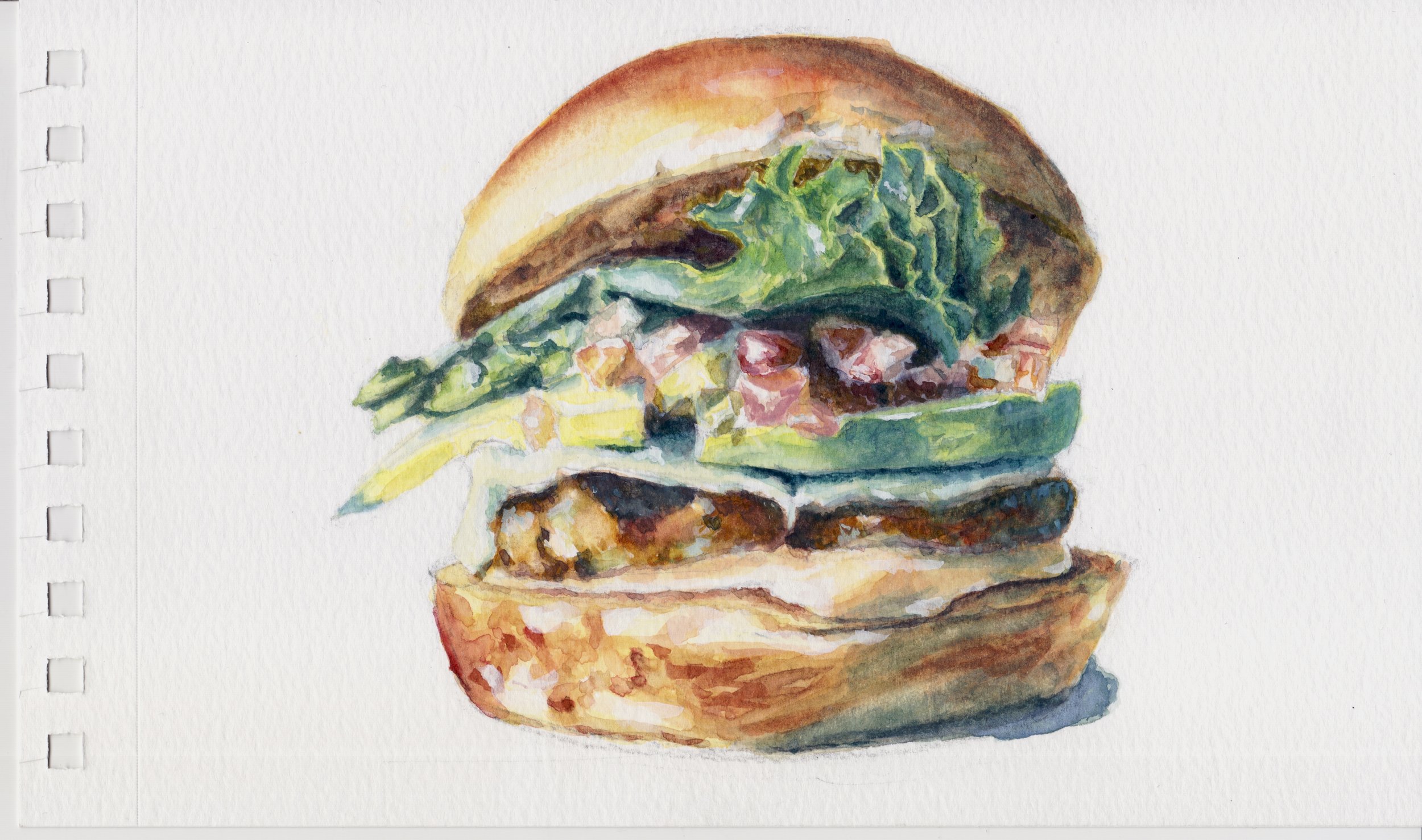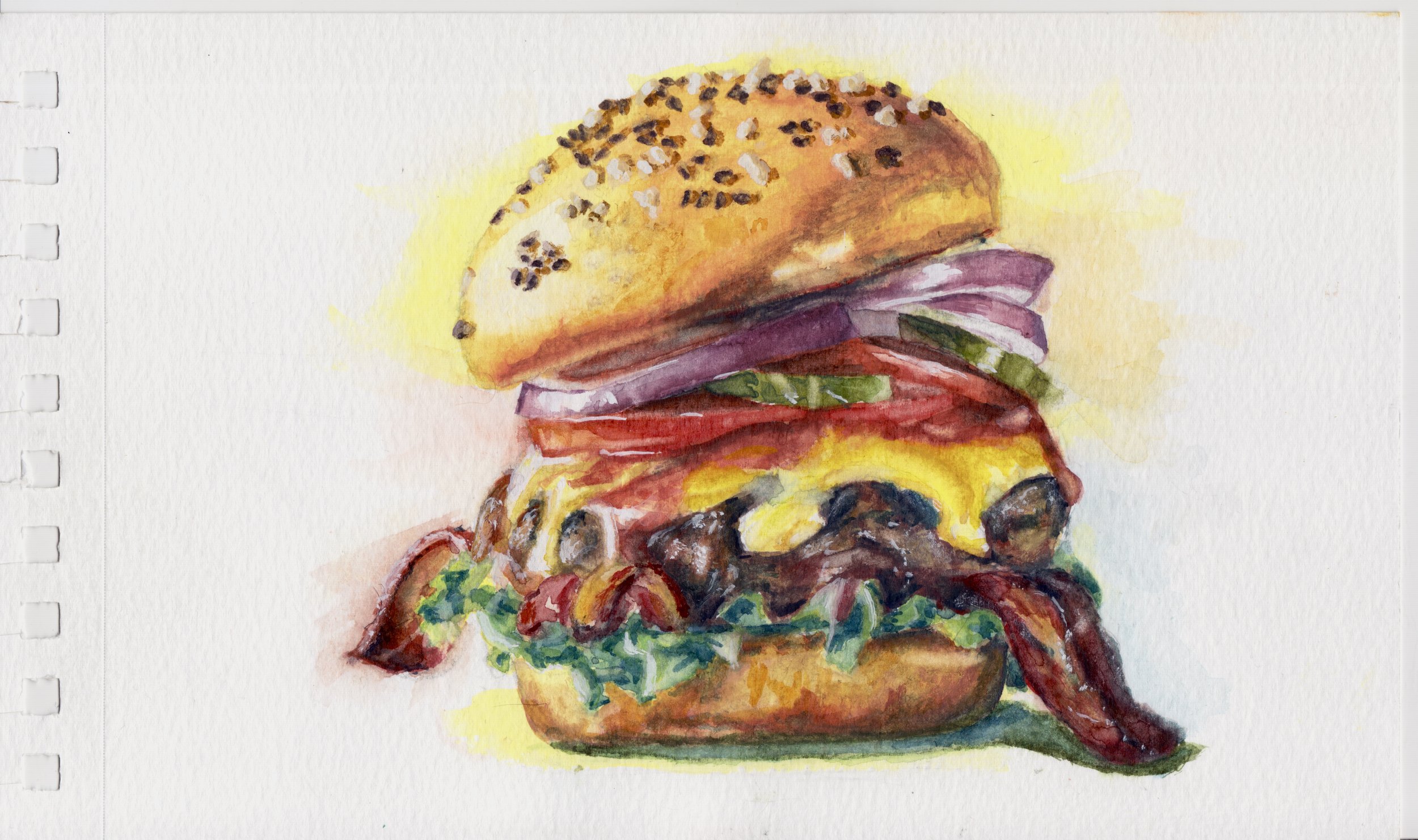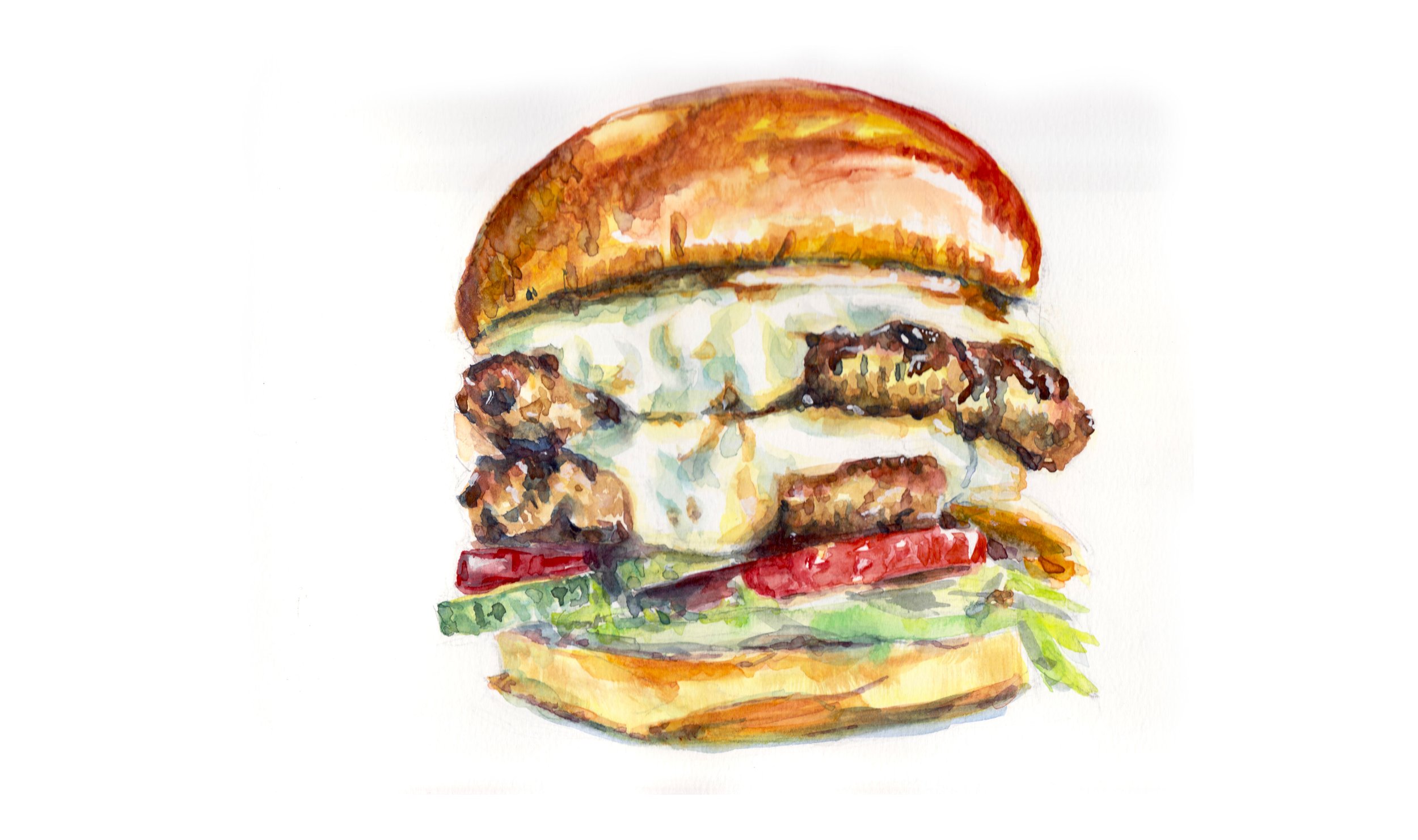Building a Burger with Math
Illustration by Koji Arai.
BY WHITNEY CLAVIN
When physicist Koji Arai, a lead research scientist at Caltech's Laser Interferometer Gravitational-wave Observatory, or LIGO, is not busy improving technologies to measure ripples in space-time, he likes to create paintings, capturing people, landscapes, and cats. But perhaps no other subject has seized his attention like a mouth-watering hamburger.
Arai has painted dozens of watercolor burgers, some dripping with Swiss cheese and others toppling over with extra ingredients like crispy onion rings. At one point, he even assembled 12 of his tasty still lifes into a calendar for his friends.



But Arai's obsession did not stop there. He wanted to create a different kind of burger portrait—one that uses math.
"Everybody imagines a burger in their heart and immediately understands it," he says. "There's an essence to a burger, like Plato's ideal forms, and for me that essence can be captured in math."
The result is the Math Burger, a digital creation born from just one complex mathematical function, which Arai describes in technical detail on his LIGO webpage. The basic idea is that all the layers of a typical burger—the bun, onion, tomato, cheese, patty, and lettuce—can be described, or mapped out, using a single mathematical formula, also known as the “Generalized Burger Function.” Each layer is essentially a sphere; the different variables of the equation dictate how each sphere should be squeezed or deformed to resemble the burger ingredients.
"The cheese and lettuce were a bit more difficult to figure out because they are more complex shapes," he says.
The idea for distilling the elements of a burger down to their mathematical forms first came from Arai's wife, who challenged him to create a burger using a CAD (computer-aided design) program, which he uses to design mechanical parts for LIGO. "CAD was too easy," he says. "I wanted to come up with a grand unified math equation for burgers instead, and, in the end, this was actually the easiest route to create a digital burger."
The instinct to simplify, Arai says, is one most physicists can understand. "It's the physicist's dream to create simple models of things,” he says. “Take a cow for instance. To a physicist, it's simply a sphere."
Likewise, when Arai sets his eyes on a deluxe cheeseburger, he sees seven spheres connected by one beautiful mathematical function. That is, until he eats it.

